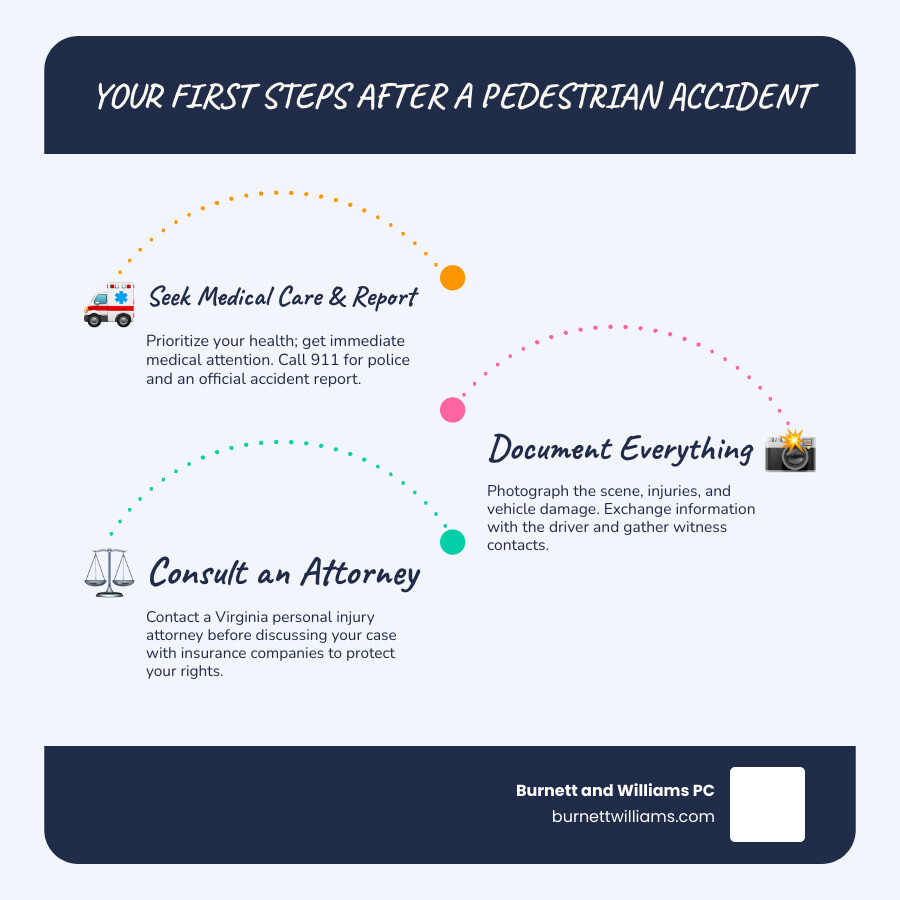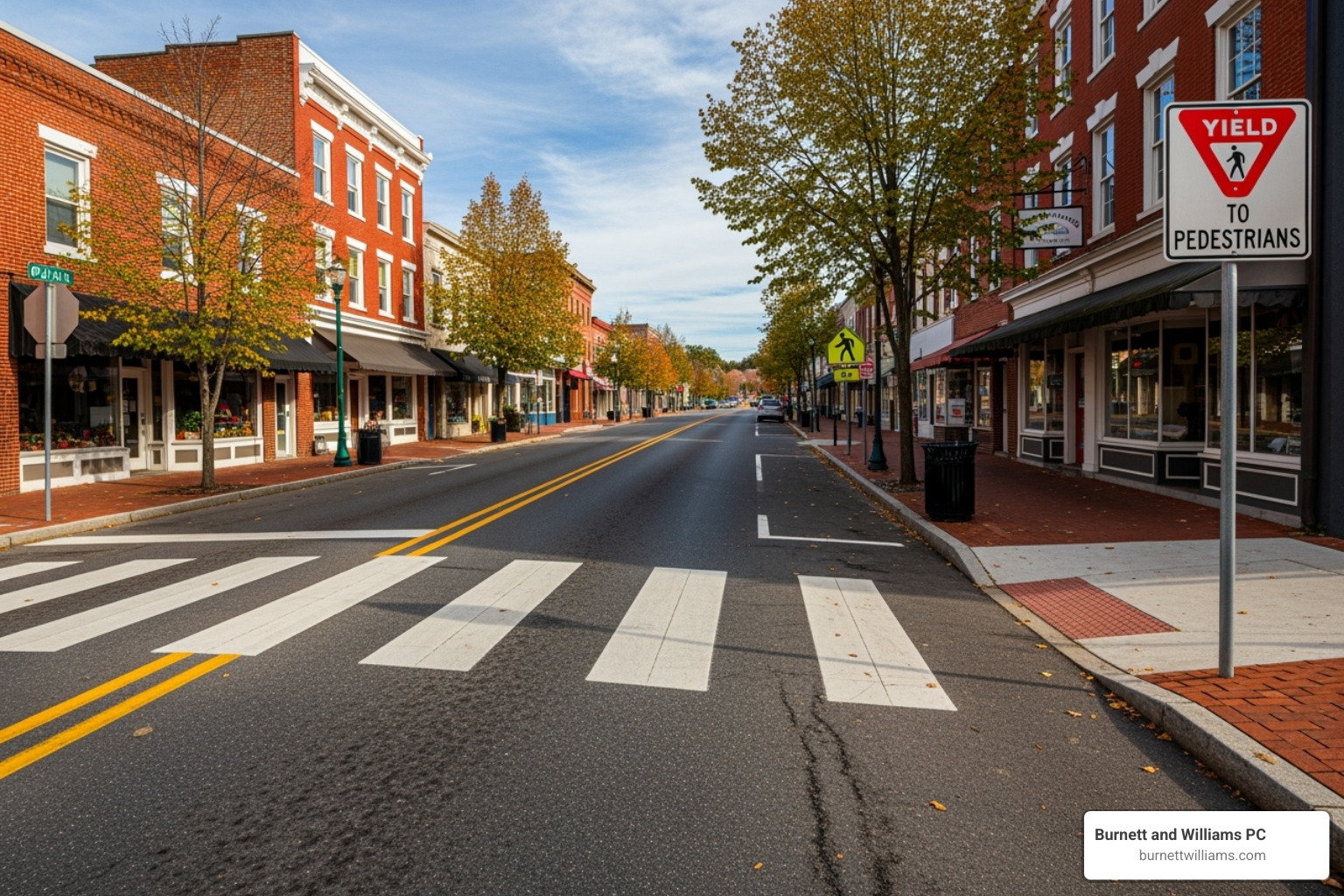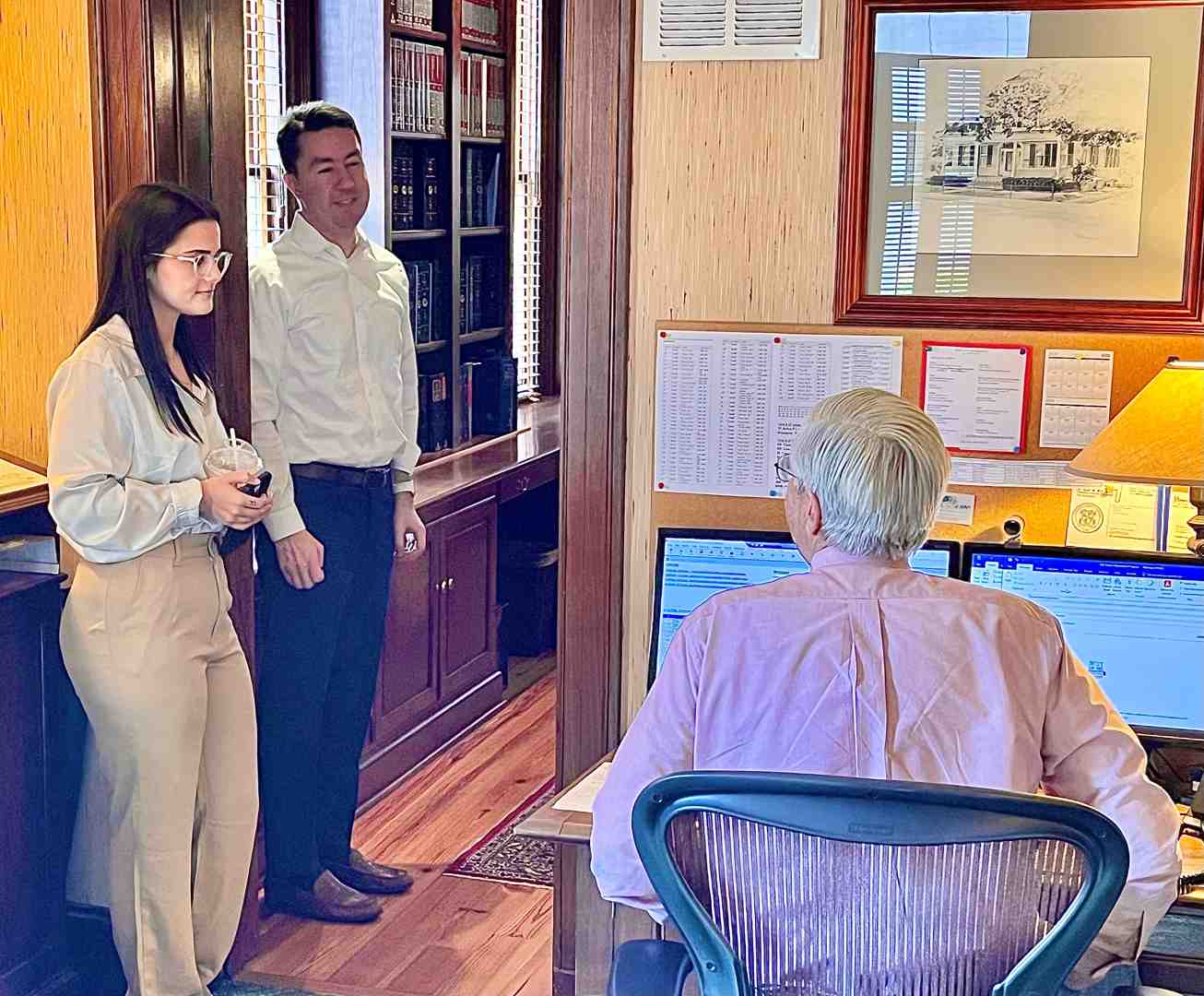Why Time Matters After a Pedestrian Accident
A pedestrian accident claim in Virginia requires immediate action. When a vehicle strikes a person on foot, the consequences can be life-altering, with medical bills piling up during recovery. Protecting your rights from the very beginning is essential.
The moments after an accident are critical. According to federal data, a high percentage of these accidents happen in low-light conditions, increasing the risk on busy Virginia roads like Route 1 and I-95.
What makes these cases especially challenging is Virginia’s strict contributory negligence rule. If you are found even 1% at fault, you could be barred from receiving any compensation. This harsh standard, combined with a two-year statute of limitations, means you have a limited window to act. Insurance companies may use delays to their advantage, hoping you miss this crucial deadline.
With proper documentation and experienced legal guidance, victims can recover compensation for their losses. The key is taking the right steps immediately.
First Steps to Take After a Pedestrian Accident in Virginia
The moments immediately following a pedestrian accident can be chaotic, but the actions you take can protect your health and your potential pedestrian accident claim. Always prioritize your well-being first.
Seek medical attention right away, even if you feel fine. Some serious injuries are not immediately apparent, and a medical evaluation creates an official record linking your injuries to the accident. At the same time, call 911 to ensure a police report is filed. This report provides an objective account of the incident.
If you are able, document everything. Use your phone to take pictures of the scene, the vehicle, its license plate, and your injuries. Exchange contact and insurance information with the driver, but avoid discussing fault. If there are witnesses, get their contact information, as their statements can be invaluable. Finally, preserve physical evidence like damaged clothing or a broken phone. Before speaking with any insurance adjusters, it is wise to consult an attorney.
What Evidence is Crucial for Your Case?
A strong case is built on solid evidence. Focus on gathering the following:
- Photographs and Videos: Images of the accident scene, vehicle, your injuries, and any relevant traffic signals or road conditions.
- Official Reports: The police report number and details from the responding officers.
- Contact Information: The driver’s name, insurance details, and contact information for any witnesses.
- Medical Records: Documentation of all treatment, from the emergency room to physical therapy, along with all related bills.
- Damaged Property: Keep any damaged personal items, such as clothing, glasses, or electronics.
Understanding Fault: Virginia’s Strict Contributory Negligence Rule
In a Virginia pedestrian accident claim, determining fault is the most critical factor. The state follows a harsh legal doctrine called contributory negligence. This rule is unforgiving: if you are found to be even 1% at fault for the accident, you are barred from recovering any compensation.
Drivers have a duty to operate their vehicles safely, which includes staying alert and yielding to pedestrians. Most accidents are caused by driver negligence like distracted driving, speeding, or failing to yield at a crosswalk. However, under contributory negligence, the insurance company will investigate your actions just as closely.
For example, if a driver was speeding but you were crossing the street outside of a marked crosswalk (jaywalking), an insurer could argue that your actions contributed to the accident, potentially eliminating your claim entirely.
Because of this strict rule, success often depends on proving the driver was 100% at fault. Factors like the time of day, weather conditions, and the exact location of the accident are heavily scrutinized. An experienced attorney can help investigate these details to build the strongest possible case. Vehicle Accidents
How Location and Time Affect Liability
Where and when your accident happened can dramatically impact your pedestrian accident claim in Virginia. The circumstances surrounding the incident often determine whether you can overcome the state’s strict contributory negligence rule.
Time of day plays a huge role. According to NHTSA data on pedestrian fatalities, a majority of pedestrian deaths occur in low-light conditions like nighttime, dusk, or dawn. These statistics reflect the real dangers pedestrians face when visibility is reduced.
Location matters just as much. Virginia law places responsibilities on pedestrians, such as obeying traffic signals and yielding to vehicles when crossing outside of a marked crosswalk. Jaywalking in Virginia can be particularly problematic for your claim because of the contributory negligence rule.
This doesn’t mean jaywalking pedestrians never have valid claims. If a driver was severely impaired or reckless, their negligence might be considered the sole cause. However, these cases require careful investigation and skilled legal representation to steer Virginia’s challenging legal landscape.
Building Your Virginia Pedestrian Accident Claim
Once you have addressed your immediate medical needs, the focus shifts to securing fair compensation. This process begins by filing a pedestrian accident claim with the at-fault driver’s insurance company, but it is rarely a simple task.
Insurance adjusters are trained to minimize payouts. They understand Virginia’s contributory negligence rule and will look for any reason to assign blame to you or downplay the severity of your injuries. It is crucial to stick to the facts and avoid giving recorded statements without legal advice.
A successful claim requires calculating all your damages, not just the obvious ones. This includes both economic and non-economic losses.
What Compensation Is Available in a Pedestrian Accident Claim?
You may be entitled to compensation for a wide range of damages, including:
- Economic Damages: These are tangible losses with a clear monetary value, such as current and future medical bills, lost wages, and reduced future earning capacity. The cost to repair or replace damaged personal property also falls into this category.
- Non-Economic Damages: These compensate for intangible suffering, such as physical pain, emotional distress, and the inconvenience and disruption to your daily life.
In the most tragic cases, families may need to pursue a Wrongful Death claim.
What is the Deadline for a Pedestrian Accident Claim in Virginia?
In Virginia, you have a limited time to act. The statute of limitations for personal injury claims is two years from the date of the accident. If you do not settle your claim or file a lawsuit within this period, you will lose your right to recover compensation forever. Insurance companies are aware of this deadline and may use it as leverage, so it is vital to start the process promptly.
How a Virginia Personal Injury Attorney Can Help
Navigating a pedestrian accident claim in Virginia can be difficult, especially with the state’s strict contributory negligence law. A Virginia personal injury attorney can protect your rights and manage the complexities of your case.
An attorney’s role includes:
- Thorough Investigation: We go beyond the police report, gathering evidence like traffic camera footage and witness statements to establish fault.
- Calculating Full Damages: We work to identify all your losses, including future medical needs and lost earning capacity, to ensure your claim reflects the true impact of the accident.
- Managing Insurance Communications: We handle all discussions with insurance adjusters, protecting you from tactics designed to weaken your claim.
- Litigation: If a fair settlement cannot be reached, we are prepared to file a lawsuit and represent you in court.
An experienced lawyer can be essential for leveling the playing field against insurance companies. Learn more about how a personal injury lawyer can help.
How Does a ‘No Win, No Fee’ Agreement Work?
We understand that financial stress is a major concern after an accident. That is why we handle pedestrian accident claims on a contingency fee basis. This is often called a “no win, no fee” agreement.
This means you pay no upfront costs or attorney’s fees. We are only paid if we successfully recover compensation for you, either through a settlement or a court award. Our fee is a pre-agreed percentage of the recovery. If we do not win your case, you owe us nothing for our time. This approach allows you to pursue justice without financial risk. You can learn more about Our Approach to Personal Injury Law in Virginia.
Frequently Asked Questions about Virginia Pedestrian Accidents
What if a child is the one injured in the accident?
When a child is injured, a parent or legal guardian must file the pedestrian accident claim on their behalf. Virginia law provides an important protection for minors: the statute of limitations is extended. A claim can be filed anytime before the child’s 20th birthday. This allows time to understand the long-term effects of injuries that may impact a child’s development. However, it is still best to act quickly to preserve evidence.
What if the at-fault driver has no insurance or leaves the scene?
If you are hit by an uninsured driver or are the victim of a hit-and-run, you may still be able to recover compensation through your own auto insurance policy. Your Uninsured/Underinsured Motorist (UM/UIM) coverage is designed for these situations. It can cover your medical bills, lost wages, and other damages. For a hit-and-run, you must report the accident to the police promptly to use this coverage.
Will I have to go to court?
The vast majority of pedestrian accident claims are settled without the need for trial. Our goal is to build a strong case that persuades the insurer to offer a fair settlement. However, if they refuse to be reasonable, we are fully prepared to take your case to trial to fight for the compensation you deserve. You can see some of our past Results.
Take the Right Steps to Protect Your Rights
Being struck by a vehicle is a traumatic experience, and Virginia’s laws can make the path to recovery challenging. The state’s strict contributory negligence rule and a firm two-year deadline to file a pedestrian accident claim are significant problems that can prevent injured victims from receiving fair compensation.
At Burnett & Williams PC, we help pedestrians across Virginia steer this complex process. We believe in responsive, caring service and keeping you involved every step of the way. Don’t let a mistake cost you your rights.
Contact a Virginia personal injury attorney to discuss your case today. Your recovery and your rights are our priority.


